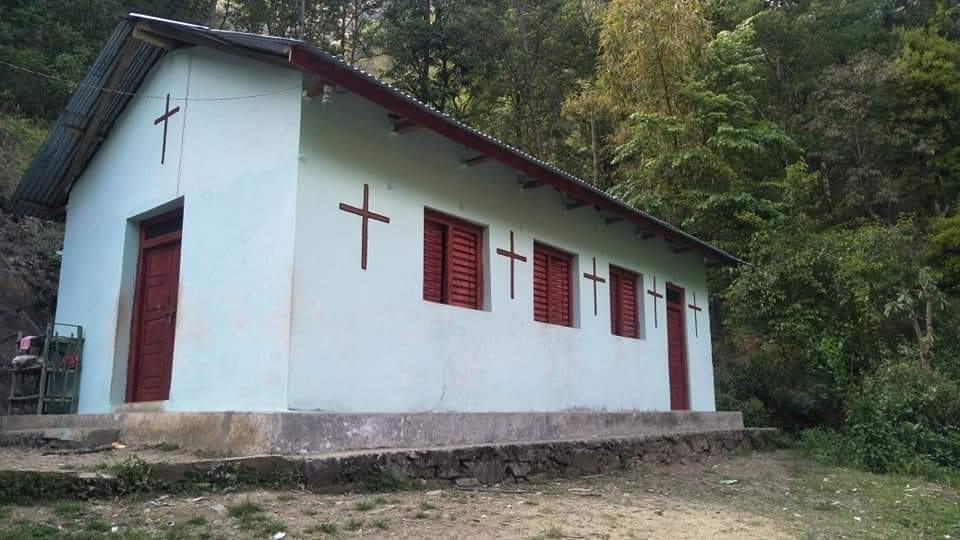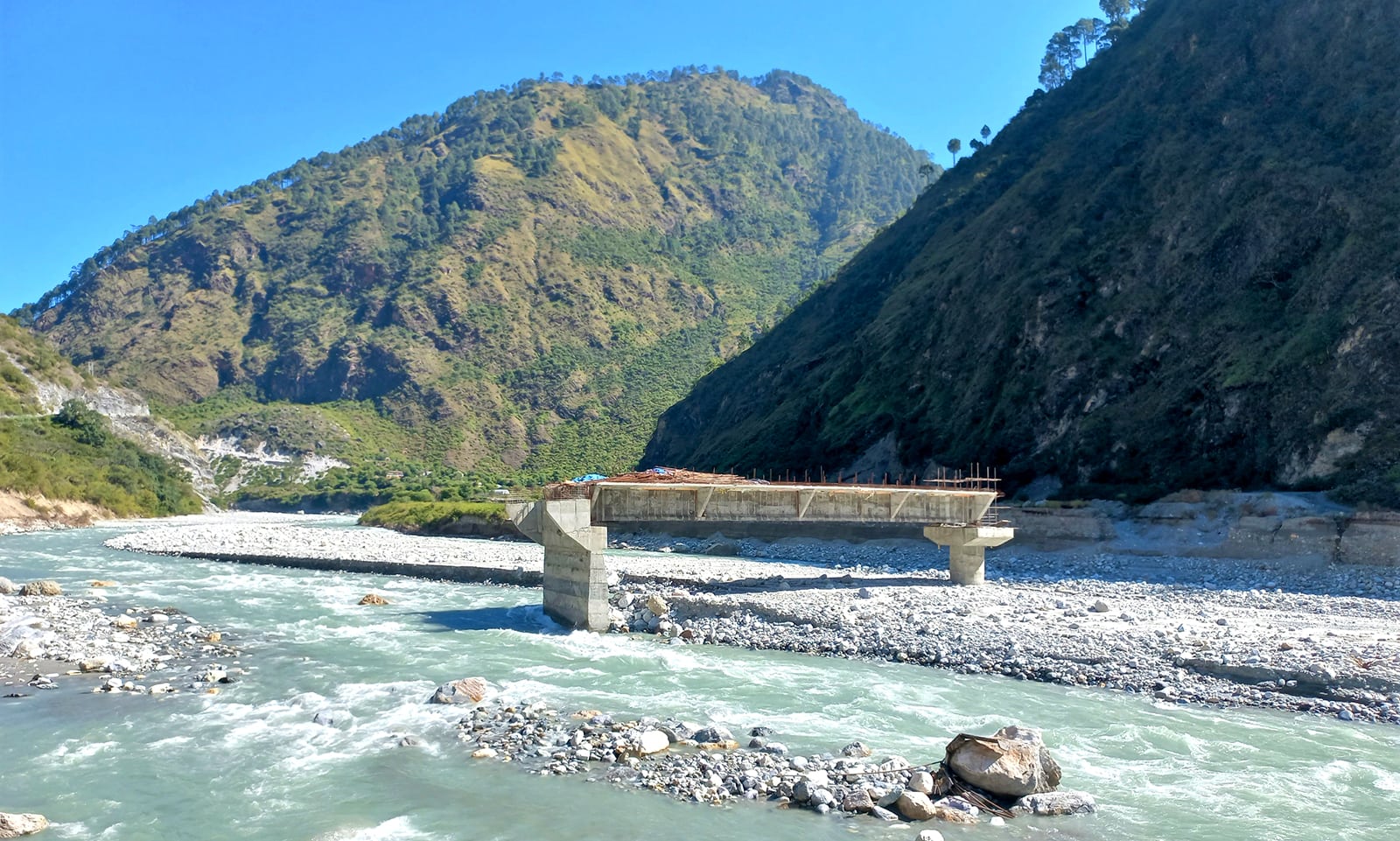In the past three years, 84 children and three children have died in Rolpa for want of basic health services. More than Rs26 million have been spent on 87 temples and 14 churches.
Mahesh Neupane, Centre for Investigative Journalism-Nepal
Scene One

A health post in Sunchahari Rural municipality.
In July-August 2020, Melina Budha, who had visited the Rolpa District Hospital in Rolpa Municipality-8 to receive safe delivery service, gave birth to a son. Although the mother was healthy, the child had a breathing problem. The district hospital referred the child to Bhairahawa, but the child died in an ambulance on the way for lack of oxygen in the ambulance. According to the Rolpa District Hospital, 84 children have died for lack of basic medical facilities in the past three years. Four new mothers have died during the same period at the hospital. What’s more, the number of women and children dying during delivery at home could be much more; the district hospital does not keep a record of such deaths.
Scene Two
Last year, only 63 percent women got an opportunity to give births at birthing centres. The government has given priority to bringing pregnant women to hospitals for delivery as the number of infections in newborns as well as death of newborns and new mothers are quite high in the case of home deliveries. However, according to the Rolpa district hospital, 37 percent women in the district still lack access to health centres. This has mainly to do with the fact that there is a lack of awareness about the need to visit health centres for delivery, and that the birthing centres are few and far between in rural areas.
Scene Three
According to the Rolpa District Education Coordination Unit, 67,988 students are enrolled in 407 community schools in Rolpa district alone. However, the allocated position of teachers in over 200 schools in the district is zero. This has hampered the education of students. According to the Rolpa District Education Coordination Unit, there is an allocated position deficiency of 252 teachers at the primary level, 431 at the lower-secondary level, and 298 at the secondary level. In Sunchhahari Rural Municipality, which has over 5,000 students, there is zero allocated position at the secondary level. According to Bhup Bahadur KC, principal of the Bageshwari Primary School, the deficiency of physical infrastructure and teachers has hampered student’s education, year after year.

Students use an umbrella while studying under a leaky school roof.
The three scenes described above lay bare the situation of primary health and education in Rolpa district. But local level administrations in the district continue to overlook this pathetic situation even as they spend a large chunk of their budgets on building churches and temples.
According to the budget booklet of the local levels, the local levels of Rolpa district have spent Rs20.64 million on 87 temples and 14 churches. The money the local levels have spent on the temples and churches would have been enough to hire almost 110 teachers at schools that have been reeling under severe deficiency of teachers.
The locals of Rolpa Municipality-10 have to walk for over three hours even today to receive basic health and education services. However, 10 temples have been built in the same ward in the past three years. According to Man Bahadur Khatri, the ward chairperson, the temples had been built due to public demand. “We invested in temples because this is what the people want”, Khatri told CIJ-Nepal.
ButMoti Lal Dangi, a local, said the ward had been extremely irresponsible towards the needs of the people as it focused its efforts on building temples rather than uplifting the education and health sectors. “They’re after cheap popularity”, Dangi said, adding that elected representatives had failed to identify the needs of the people as they only focused on unproductive things to spend the budget on.
Sunil Smriti Rural Municipality in Rolpa has allocated a total of Rs5.82 million for 10 temples in the last three fiscal years. Lungri Rural Municipality allocated Rs5.5 million for renovation and building of 20 temples during the same period. Parivartan Rural Municipality allocated Rs2.6 million for renovation and building of 16 temples during the same period.

A newly constructed temple in Madi Rural municipality. The local government had allocated budget for its construction.
According to Jhakku Prasad Neupane, assistant professor at the Rolpa-based Jaljala Multiple Campus, the local and provincial governments spending such huge amounts of budget on temples stands against the ideals of secularism. “The entire country is affected by the Covid-19 pandemic. And yet, the elected governments are spending the budget on temples; that too in Rolpa–the nerve-centre of the Maoist insurgency.”
A temple at Ransi in Ward-2 of Parivartan Rural Municipality has become a centre of contestation after completion as locals protested an ‘unusual’ amount of expenditure on construction. The temple, built at a cost of Rs1.7 million, was constructed by a consumers’ committee which is presided over by Guman Dangi, the younger brother of Nimakanta Dangi, the chief of the rural municipality.
Guman said the cost of construction shot up due to high expenses on transportation of construction materials. “I’ve not cheated,” he said. His brother, the chief of the rural municipality, said there had been no irregularities in the construction of the temple.
The list of local levels spending on temple projects does not stop there. Rolpa Municipality, the only municipality in the district, has spent Rs2.46 million on the construction and renovation of 15 temples in the past three years. Gangadev Rural Municipality has spent Rs2.1 million on the building and renovation of eight temples, according to Ramesh Dangi, a technician at the rural municipality. Runtigadhi Rural Municipality has spent Rs2.3 million on eight temple projects in the past three years. Madi Rural Municipality has spent Rs7.5 lakh on three temples. Sunchhahari Rural Municipality spent Rs1 million on four temple projects and has allocated Rs1.5 lakh for one temple project. Thawang Rural Municipality has spent Rs1.05 lakh on one temple project. Triveni Rural Municipality has spent Rs50,000 on one temple project.
Focus on churches
In recent years, local governments have been spending their budgets on constructing buildings and renovating churches. According to the budget booklet of the local levels, three local level administrations of the district have spent Rs3.61 million on 14 churches in the past three years.

A church in Pariwartan Rural municipality, Rolpa.
Parivartan Rural Municipality allocated Rs9.5 lakh for four churches in three years. Gangadevi Rural Municipality spent Rs6 lakh in a year. Runtigadhi Rural Municipality allocated Rs2.6 million for nine churches in three years. According to Durga Khadka, the chief of Lungri Rural Municipality, the budgets for churches have been allocated on public demand. “We’ve invested in temples and churches as that helps preserve our culture,” Khadka told CIJ-Nepal.
Rekha Sunar, a local of Sunim Smriti Rural Municipality-6, said the local levels must first invest in health and education before investing on anything else. “It’s depressing to see the local levels spending money on temples and churches when the people are deprived of health and education. This is not going to bring prosperity.”
Not only local governments, but even the provincial government has spent a huge amount of money on temples. According to Pawan Kunwar, personal secretary to Kul Prasad KC, the Internal Affairs and Law minister of Lumbini Province, the government has allocated a total of Rs5 million towards construction and renovation of temples: Rs1 million for Shivalaya Temple renovation, Rs1 million for Barah Sthal conservation in Khungri, Rs2 million for Khungri Temple construction, Rs1 million for Bahrekhola Barah Sthan conservation.
Although each ward of the local levels has women and Dalit representatives, the fact that the local governments have focused on temples and churches rather than programmes aimed at supporting women and Dalits is quite strange, said Mohan Pariyar, secretary at the Samyukta Dalit Jana Adhikar Manch (Joint Dalit Human Rights Forum), Rolpa. “Noone is concerned about the ills of the health and education sectors. Noone cares about the upliftment of margnialised communities. But the budget is being poured into temples and churches in a district like Rolpa.”



